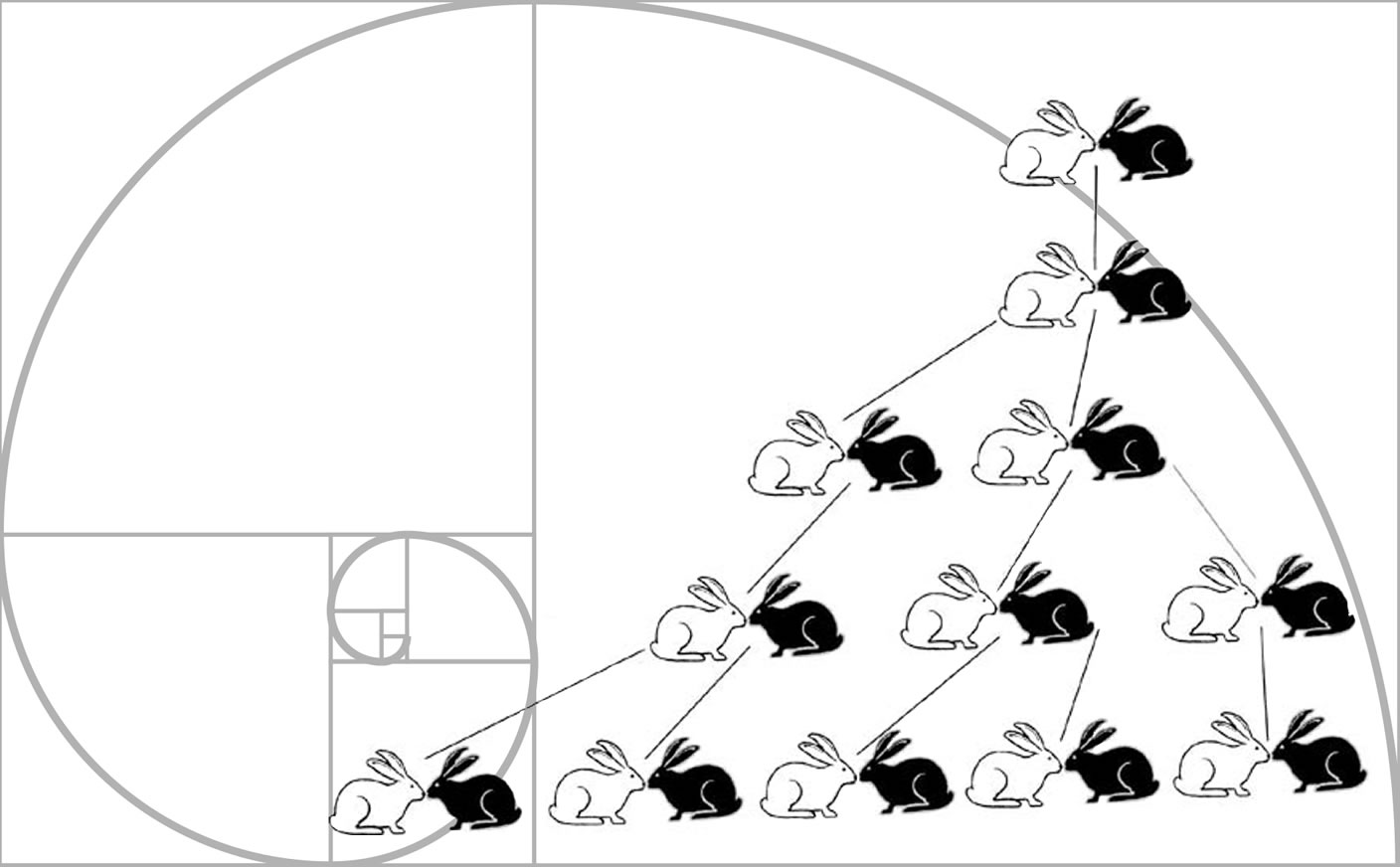The rabbit problem

Though Fibonacci wrote about a multitude of mathematical topics, he is best known for his number sequence 1, 1, 2, 3, 5, 8, 13, 21 … The sequence was later named after him and is still to this day being actively researched. Any number in this sequence is the result of the addition of the two preceding numbers: F_n = F_(n−1) + F_(n−2). F_1 = 1 and F_2 = 1 serve as starting values. This number sequence has its origins in a fairly trivial problem, one of many arithmetical problems, tackled by Fibonacci in his "Liber abaci": the rabbit problem. Fibonacci himself does not take the first 1 of the sequence into consideration.
How may pairs of rabbits will one pair produce in a year?
"A man keeps a pair of rabbits in a place that has been surrounded by a wall to find out how many pairs would be produced in a year. It is in their nature to produce a new pair every month and they give birth for the first time in the second month after their birth.
Because the initial pair gives birth in the first month, you can double it so that there are two pairs after one month.
- Of these, one, i.e. the first, gives birth again in the second month; so there are three pairs in the second month.
- Of them, two gestate again in a month so that two pairs of rabbits are born in the third month, which means there are then five pairs in this month.
- Of them, three gestate in the same month, so there are eight pairs in the fourth month. Of these, five pairs give birth to a further five pairs; if these are added to the eight pairs, we have 13 pairs in the fifth month.
- From them, the five pairs that were born in this month don't mate yet but in the same month the other eight pairs gestate, so there are 21 pairs in the sixth month.
- If the 13 pairs born in the seventh month are added to these, there will be 34 pairs in this month.
- If the 21 pairs born in the eighth month are added to these, there will be 55 pairs in this month.
- If the 34 pairs born in the ninth month are added to these, there will be 89 pairs in this month.
- If the 55 pairs then born in the tenth month are added to these, there will be 144 pairs in this month.
- If the 89 pairs then born in the eleventh month are added to these, there will be 233 pairs in this month.
- If, finally, the 144 pairs born in the last month are added to these, there will be 377 pairs at the end.
And the initial pair, in the place described, will have brought into the world so many pairs at the end of a year."
English translation from Chapter 12 of external page "Liber abbaci" in the Latin edition by Baldassarre Boncompagni (Rome, 1857, pp. 283f.)